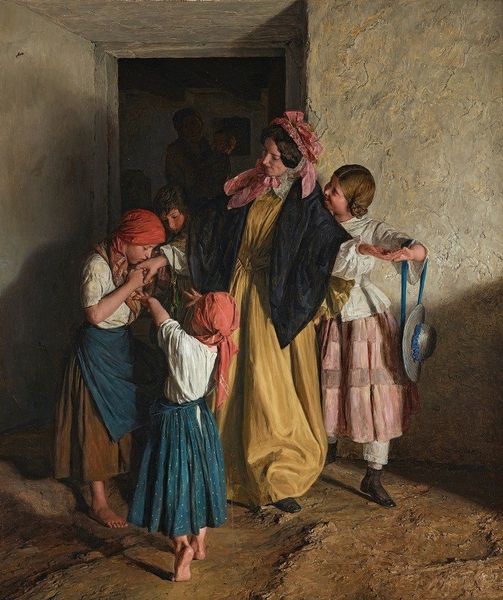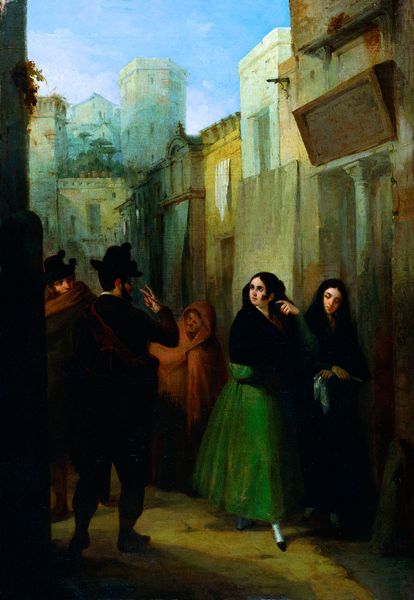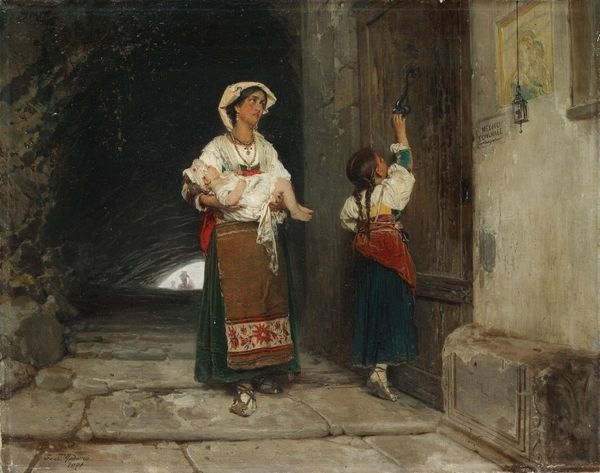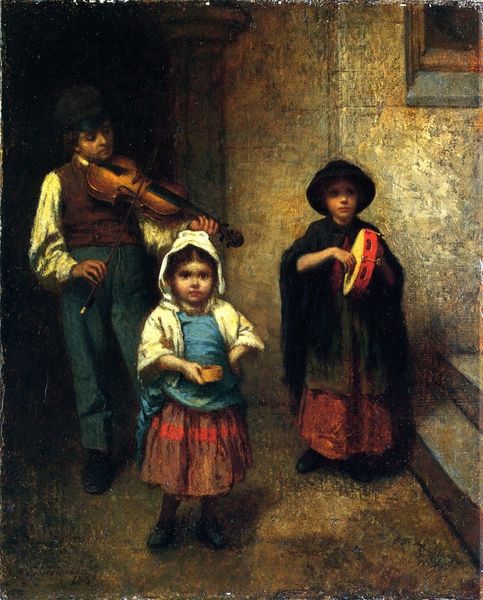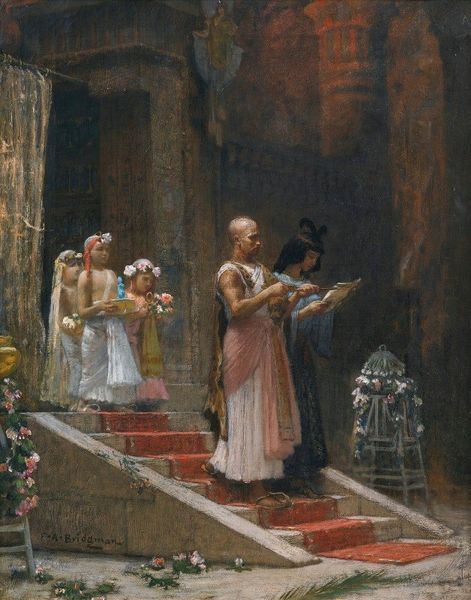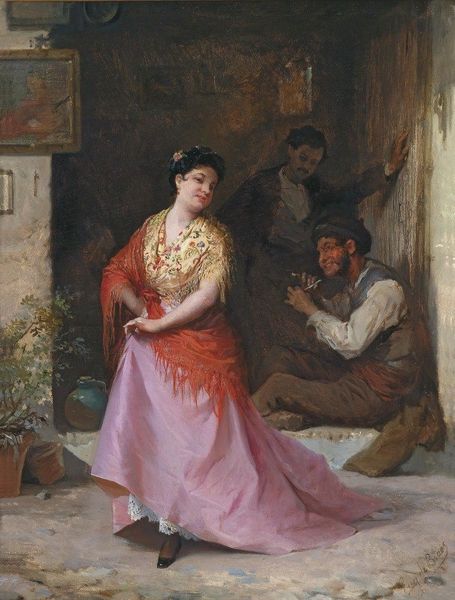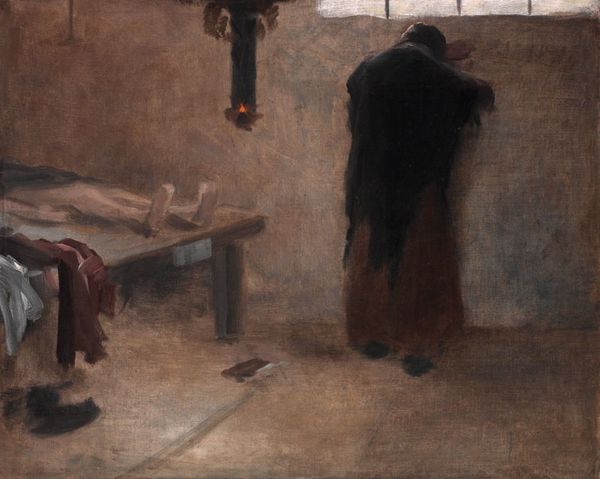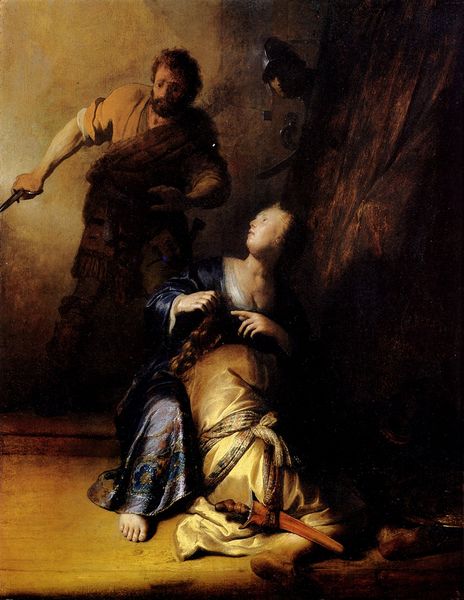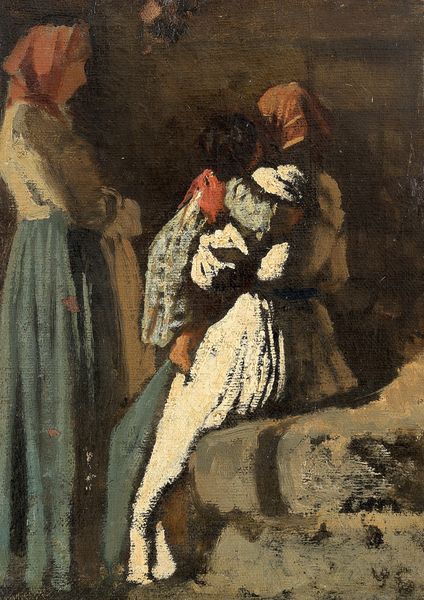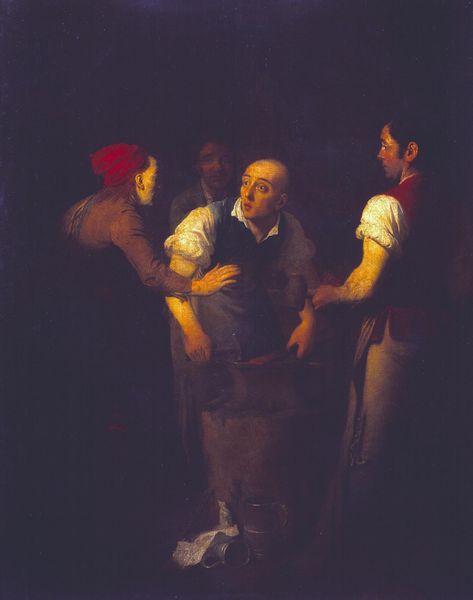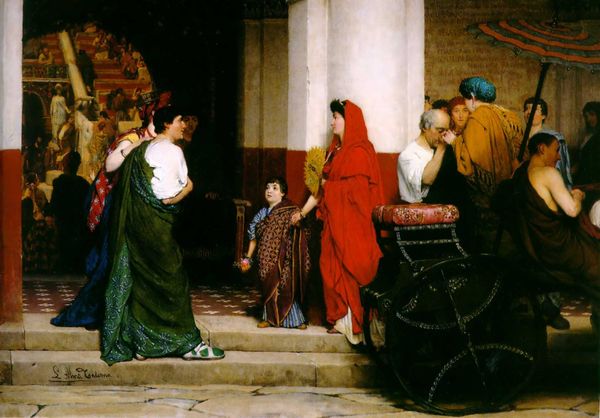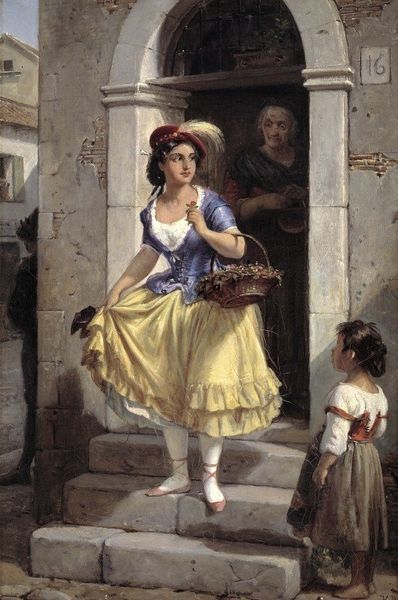
Dimensions: 70 x 97.8 cm
Copyright: Public domain
Curator: Weeks finished this genre painting entitled "One Thousand and One Nights" around 1900. It is oil on canvas. Tell me, what’s your initial read on this work? Editor: It has a distinct aura of theatricality, a staged intimacy perhaps? The women, the hesitant glimpse, that burdened figure outside the doorway. It evokes a sense of veiled secrecy, but is it threatening or seductive? Curator: Weeks lived for extended periods in the Middle East, India, and Persia. This piece clearly resonates with the late 19th century Western fascination with the "Orient," which we now view with a more critical lens. Editor: The figures’ attire, and their implied actions—this glimpse behind a guarded doorway—certainly draws on established symbols. Veiled women can stand for both purity and forbidden knowledge. Is this artwork reinforcing stereotypes or trying to unpack them? Curator: The question is whether Weeks is exploring or simply perpetuating the stereotypes. Certainly, he brings an eye informed by the orientalist fascination with exotic "otherness," using imagery as it was popularly understood. Editor: Notice the almost Baroque lighting. It draws your eye directly to the veiled woman at the door—a classical siren call, perhaps? She, and the dark, veiled interior, have all the trappings of romantic fantasy. Curator: Romanticism tinged with an Imperial gaze. The entire narrative hinges on Western perceptions of a world rendered simultaneously mysterious and accessible to the male gaze. Weeks here taps into—and bolsters—the common perception of Western cultural superiority. Editor: Do you think the narrative echoes the Arabian Nights? Is Weeks hinting at powerful female storytellers, figures like Scheherazade using wit and cunning to defy power? Curator: It is more probable Weeks simply used a topical popular interest to present an idea of 'the Orient', than reference an overt commentary of such matters. However, those echoes, whether intentional or not, add layers of complexity to our engagement with the work today. It’s fascinating how cultural symbols adapt through history, don’t you think? Editor: Indeed. This image serves as a window into both the depicted scene, and the historical mindset of its creator, offering insights into both what was seen, and how it was interpreted.
Comments
No comments
Be the first to comment and join the conversation on the ultimate creative platform.
